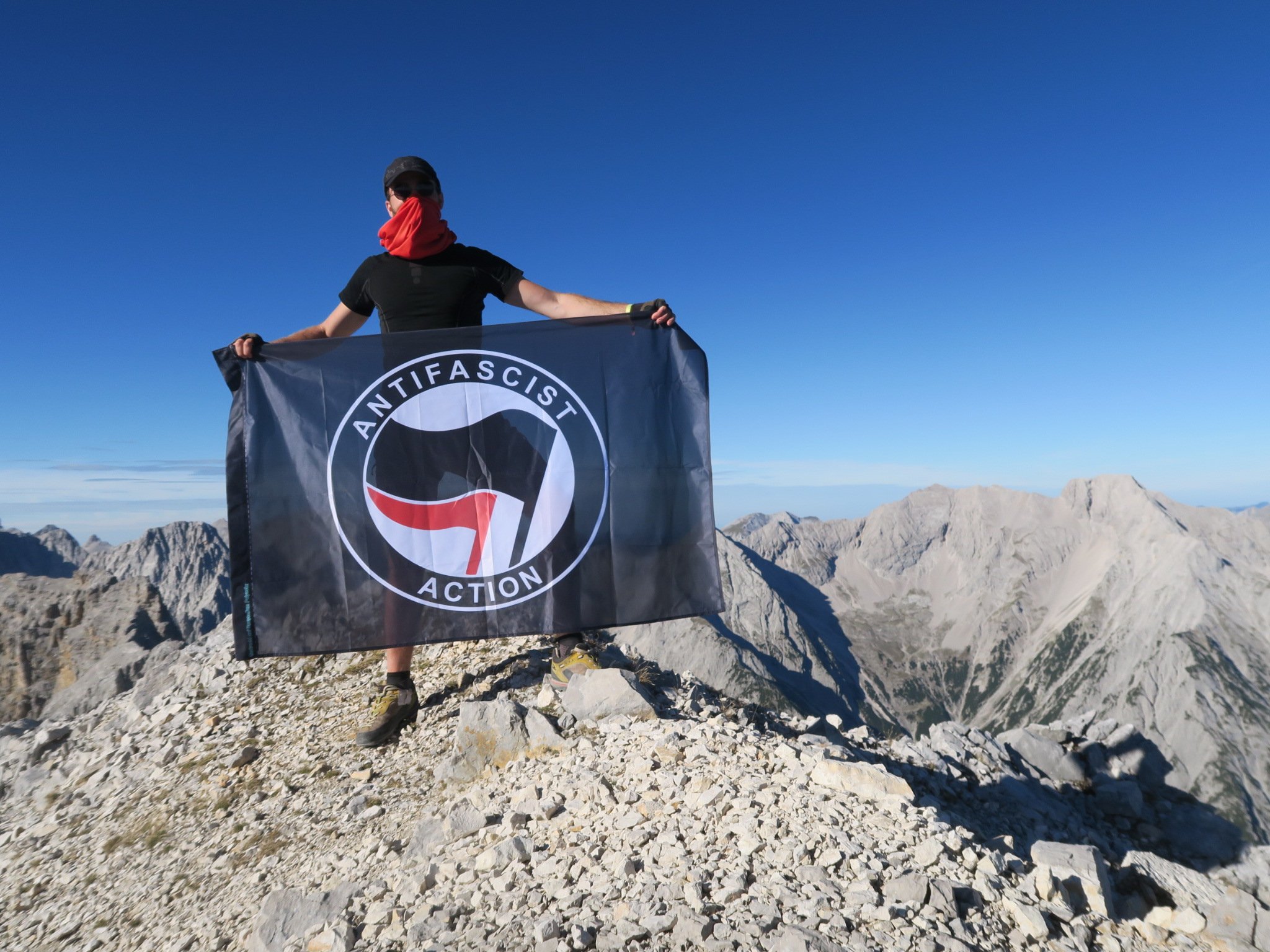Red alpinism: Struggles between sky and earth.
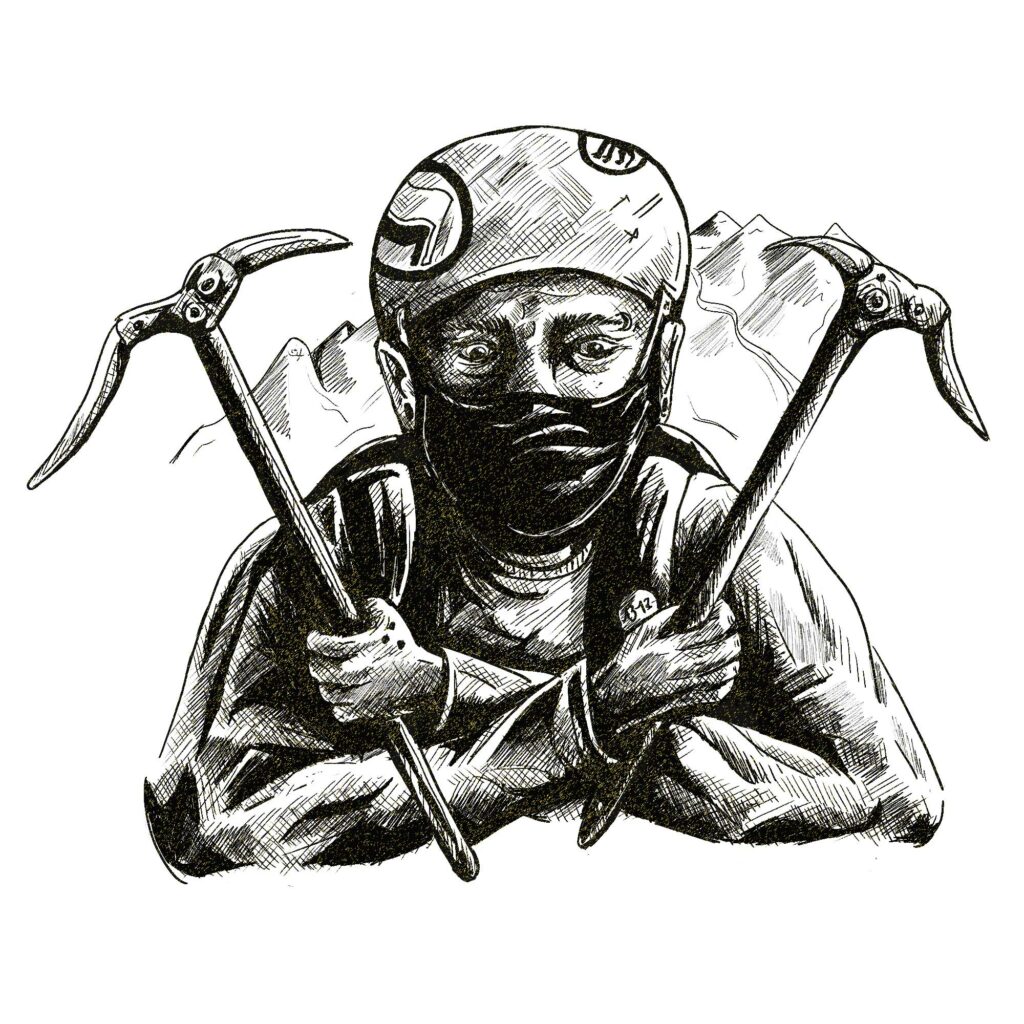
“We’re going to take the kids to climb a glacier in the Alps.” At that very second, my imagination was jostled. Feet weighed down by the snowy lightness, lace lips from the polar cold, waist chiseled by the rope, on which Bouba, Didoum and Ahmed are pulling in hyperventilation behind us. A bead of sweat slowly trickles down our temples as social workers for youngsters, the scenarios unfold. Bouba, at the ankle in an inverted right angle, Didoum, the snow stack, which rolls towards certain death; or again, Ahmed becoming an ice cube, his posterity forever engraved in the glacier. “We will climb in roped party, we will be well equipped, don’t worry”.
The magic word has been spoken. Roped party. The sky covered with my funeral thoughts lets through the luminous rays of the social worker Deligny, traveling companion of the seed sowers that we are. Investigator of “The Great Cordée”, he advocated indocility in the face of injunctions, detours from established paths, freedom from walls. From walls to borders, from borders to mountains. Here I am lost on the paths of thinking.
| Article & Illustrations by Momo Tus
Logos & pictures from Alpinismo Molotov, Antifaschistische Bergfreund*innen & Alpinpunx

From a struggle of the summits…
As the trade unionist Guillaume Goutte writes in his book Alpinisme et Anarchisme, “the border is a political, and therefore human, construction to which the mountain is foreign. At most it is sometimes a pretext to define them”.
Object of covetousness, borders and wars, the nationalist reappropriation of this natural setting has been widely illustrated in history. Symbol of the obstruction of the freedom to come and go, it divides people.
This is evidenced by the sporadic appearance of the blue down jackets of Génération Identitaire (a French right wing movement), claiming a right over the mountains and over the destiny of the migrant souls who cross them.
Here I am realizing that I have always imagined mountain practices as by and for the privileged. From hiking to skiing, from climbing to mountaineering, beyond the economic barrier, the a priori of a tradition of community and closed transmission are mixed together.
I then imagine René, mountain guide, burnt skin with whitish eye contours, panicking at the sight of the TNs (Nike Air Max) that Bouba did not want to leave in the neighborhood.

Because alpinism has long bordered on the dreams and summits of the bourgeois male elite, “For the homeland, through the mountains” will be the slogan of the French Alpine Club in the nineteenth century.
Heroes, crowned with an individual performance, not thanks to but against the Mountain: “conquer” a summit, “attack” a route, “defeat” a mountain. A martial domestication of our mother and nourishing earth.
Qualified “from inaccessible to the weak and the impudent”, from Nazism to today, alpinism has been a political, economic and military conquest. I then imagine a “Didoum” peak – alongside the already existing Lenin or Stalin peaks -, in homage “at the snow haystack”, which, with its flawless velocity, will have crushed and made his own the miles of snow beneath its path.
In this quest for past struggles, here I am exchanging by eagle flight with Lukas from the Austrian collective committed alpinism Alpinpunx, from the hardcore punk scene.“This ideology is still present on new climbing routes with right-wing extremist route names” will he confide. From peaks to road names, the traces are still there. I’m wondering. The Mountain, symbolizing freedom, was a terrain to conquer and tame.
But, can we really tame it?
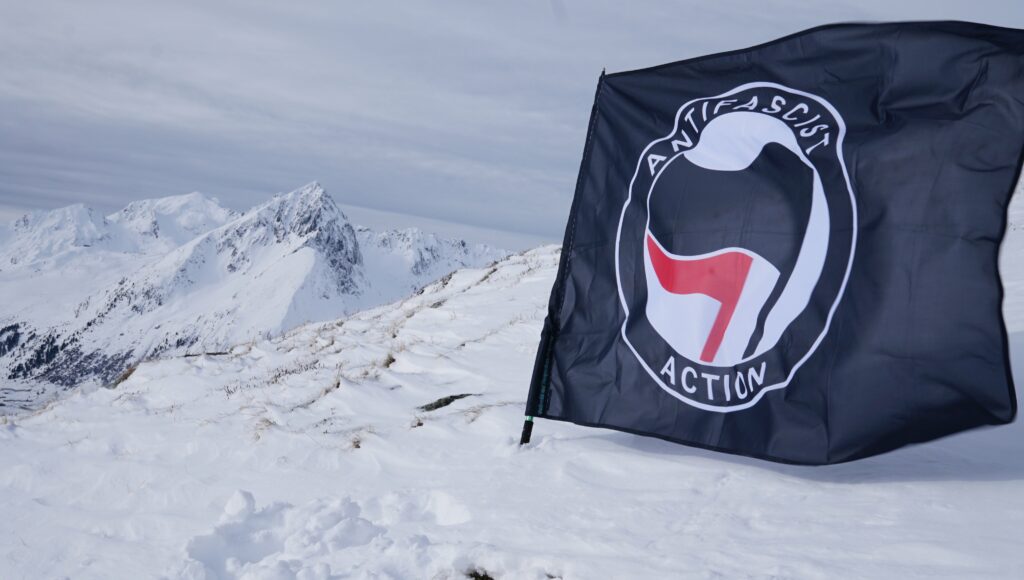
… to “Molotov” Alpinism.
“In their mountains lived hope and hid freedom” sang the Pioneers of Vercors. The resistance fighters having known how not to tame the Mountain, but to live with it. Because it provides protection and concealment from state control.
Small libertarian groups like the Passengers of hope under the Franco era having, for example, invested the Pyrenees. As Goutte says, the Mountain is a place of “passage of the persecuted, refuges for the oppressed and grounds of resistance for the revolted”.
With this resilient heritage, alpinism has been able to tackle through the 20th century the Mountain in its purest richness: freedom of mind and body.
Lukas confides: “The love for the DIY movement is our constant companion on our excursions. Being in the mountains, whether as a climber, as a mountaineer, on mountainbikes or on a hike, usually always means endless freedom for us.”
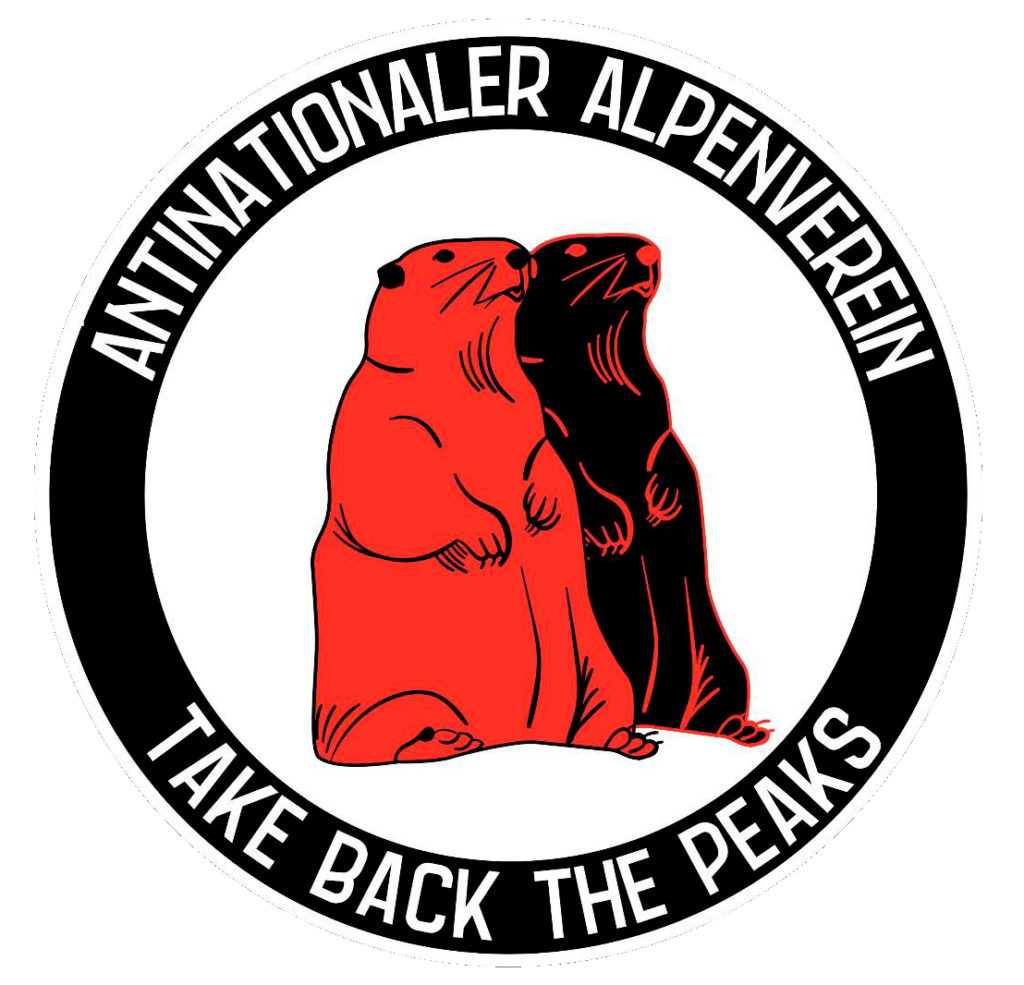
This freedom is the one that also pushed the workers to free themselves from a alpinism tinged with hygienic paternalism for a labor alpinism, by and for the workers.
The mountain section of the FSGT (French left-wing sport organization) is the best-known example, mobilizing its militant paws and foots still today like the Marauders of the Col de Montgenèvre for migrants.
This libertarian spirit also extends to our brothers without borders, Alpine antinationale in Germany, Antifachistische bergfreund*innen in Vienna or Alpinismo Molotov in Italy.
Lukas, bringing up the origins of Alpinpunx, then mentions:
“It is not only our job to support ourselves and like-minded people, but also to make everyone feel that their anti-human ideology is not welcome in our beloved mountains.”
These values, from transmission to equality, crystallize within the spirit of the roped party:
“not delegating one’s sovereignty, knowing how to count on others and allowing others to be able to count on ourselves” recalls G. Goutte.
A libertarian spirit and harmony of the body, without one part dominating over the other: “When you go too fast, your tongue trips over your legs, which means you have to slow down to coordinate everything.” illustrated aptly the anarchist alpinist Isaac Puentes.

From proletarian climbing… to the gentrification of the climbing walls.
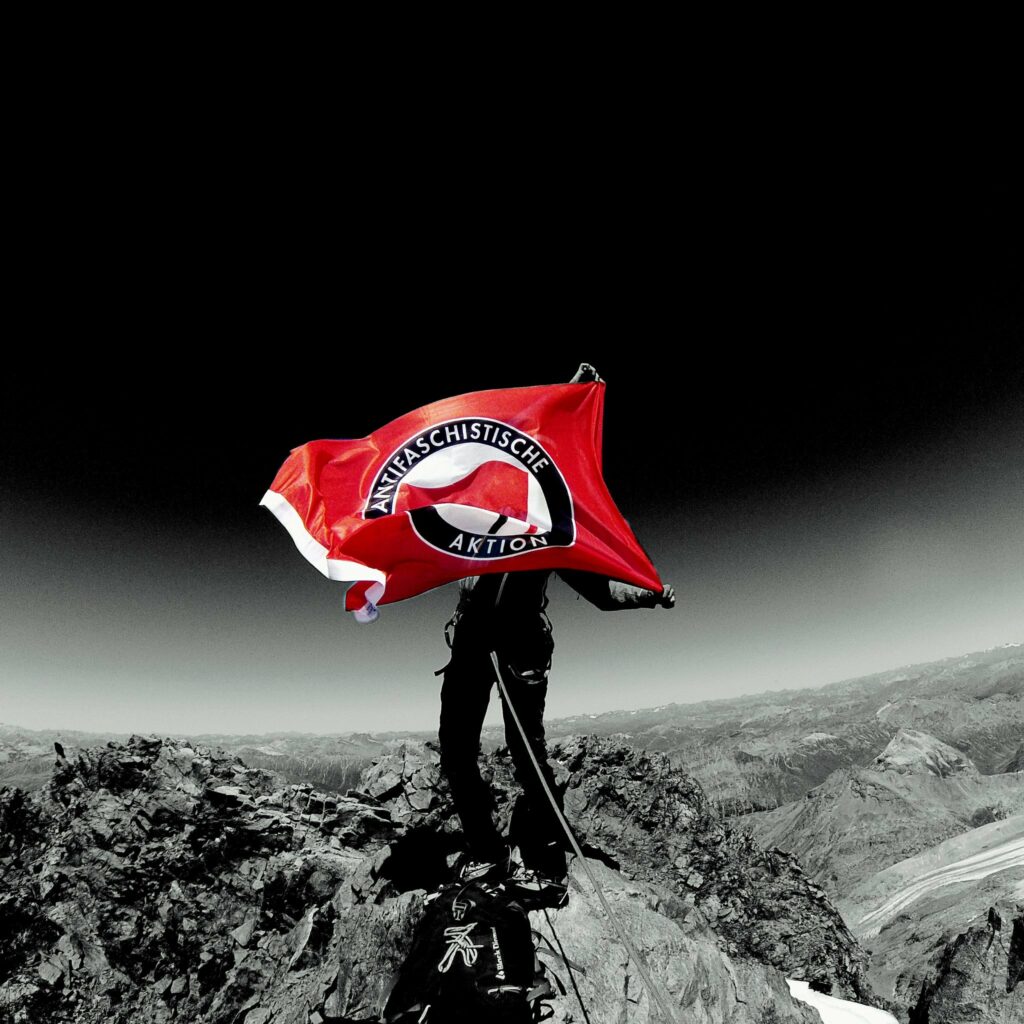
So it’s full of these resistant traces past and present that I’m ready to put on ice axes and harnesses. “However, we should plan wall climbing sessions with the kids.”.
I tense up at the predictive vision of Ahmed, who in the void, sways from left to right, while I breathe like an ox, in an intense squat position, to hold back his 85 kilos of monkeyness.
Belay, like roped party, has a strong symbolism of mutual aid: not only the mutual trust that we place in each other, but also the interdependent responsibility that we assume. A rare educational contribution in sporting practices, which remains an educational gem in terms of confidence in oneself and in others.
However, my ears ring at the hearing of Arkhose or Climb-Up (French private climbing spaces). Because, in recent years, climbing has gained a commercial contribution with the explosion of private spaces. Unaffordable rates, automated belay and consumer services at your fingertips; removing the last humanist ersatz. The peak of this individualism is illustrated in 2021, with the arrival of wall climbing at the Olympics, where speed and performance take precedence over the collective.

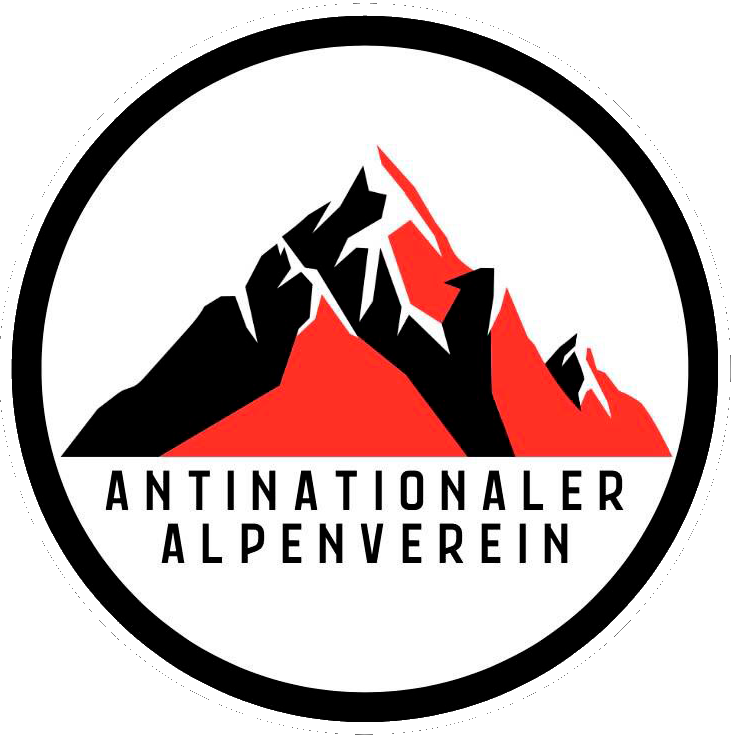

However, in the 1960s, climbing became independent of alpinism in a logic of democratization initiated by the FSGT and worker activists. More accessible to those who could not afford to leave, “Parisian proletarian climbers were riding their bike and pedaling for hours to reach Fontainebleau” tells G. Goutte.
It is difficult to find a better symbol than the location of the first artificial wall: the Fête de l’Humanité (a French left-wing values annual gathering), in 1955.
This initiative participates in the development of walls in gymnasiums. The latter are now neglected, but the spirit of the rope party still finds its way into practice – as evidenced by the manifesto “For popular, associative and self-managed climbing” of the FSGT des Popular Sports Guide which relates several militant initiatives such as solidar climbing with youngsters from neighborhoods.
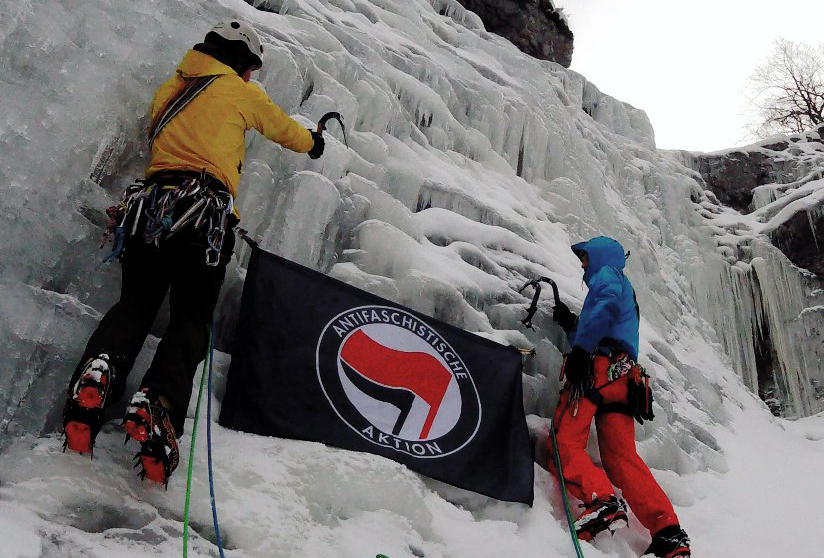
From the Mountain that protects…. to the one which must be protected.

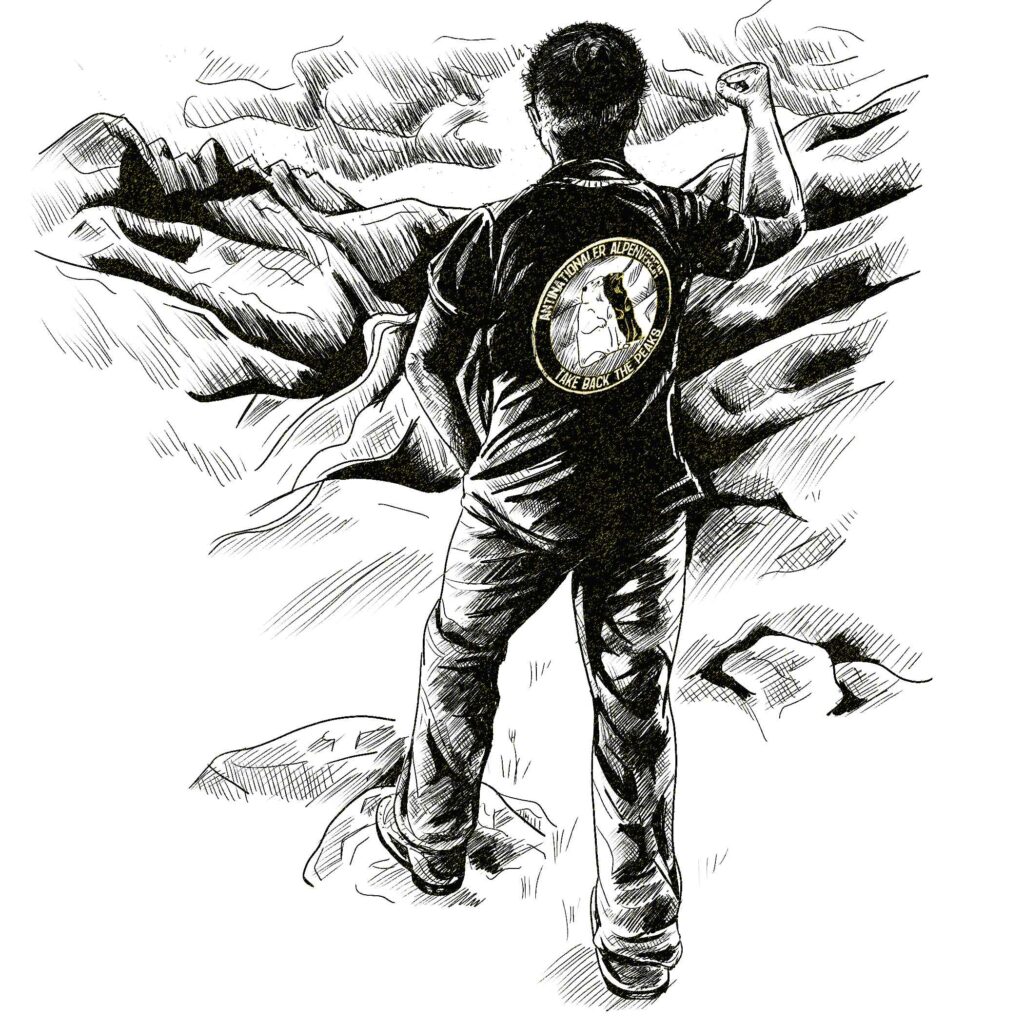
So here I am realizing to what extent the Mountain remains this unique link between sky and earth. To walk, to go up, to climb towards the skies, in the wind and on the rock, in the snow and on the ice, is to be far from the tumult of the world, it is to be a point in an immensity.
In a frozen time, specific to thought. Why should it be the prerogative of the privileged? This is what I would like to be able to bring to Didoum, Ahmed and Bouba. A pause to think. This time is a luxury that the working classes have little of, entangled in daily survival.
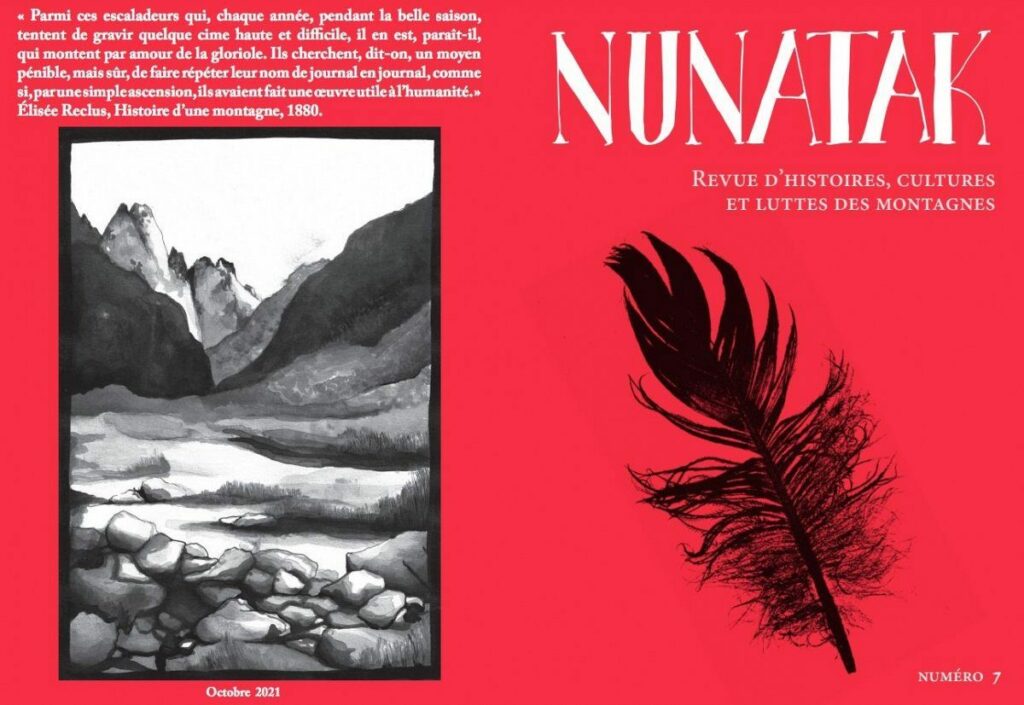
So yes, humans are inherently nostalgic for nature and always return to it.
But she is moving further and further away. The hardness of the rock that moves slowly, the majesty of the snow that melts faster than it should, the reflection of the smooth ice that blurs with the increasingly warm wind.
Mountaineers have a front-row seat. Several groups of residents have been formed to protect the Mountain, such as No THT or Collectif Chambon.
The zine Nunatak rightly questions this “fire of the struggles of the Mountain” to “deviate from the marked path of authority and attack what separates us from each other”, from the Union of Shepherds to quarrels between neo-rurals and the “local guys”.

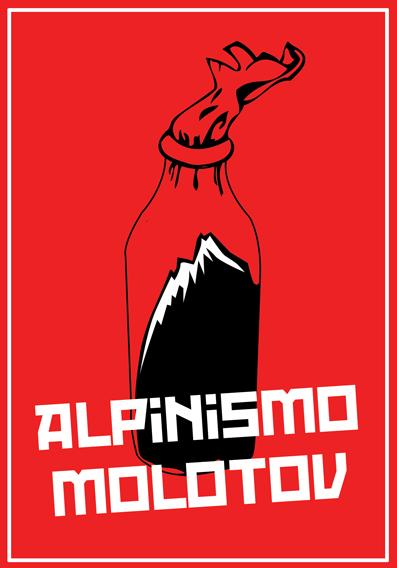
From political struggles to social struggles, the Mountain is also becoming a land of environmental struggles.
So, we ask ourselves, why climb it? It is the breeding ground of legends, daydreams, obsessions. It would perhaps be a question of moving away from this conquering thought, and of questioning not why but how to climb it – in a rope, in solidarity, in humanity.
Collective Alpinismo Molotov leaves us with this thought:
“When we say we love nature, do we mean we love it as such, or everything we build around it?”
To meditate…
